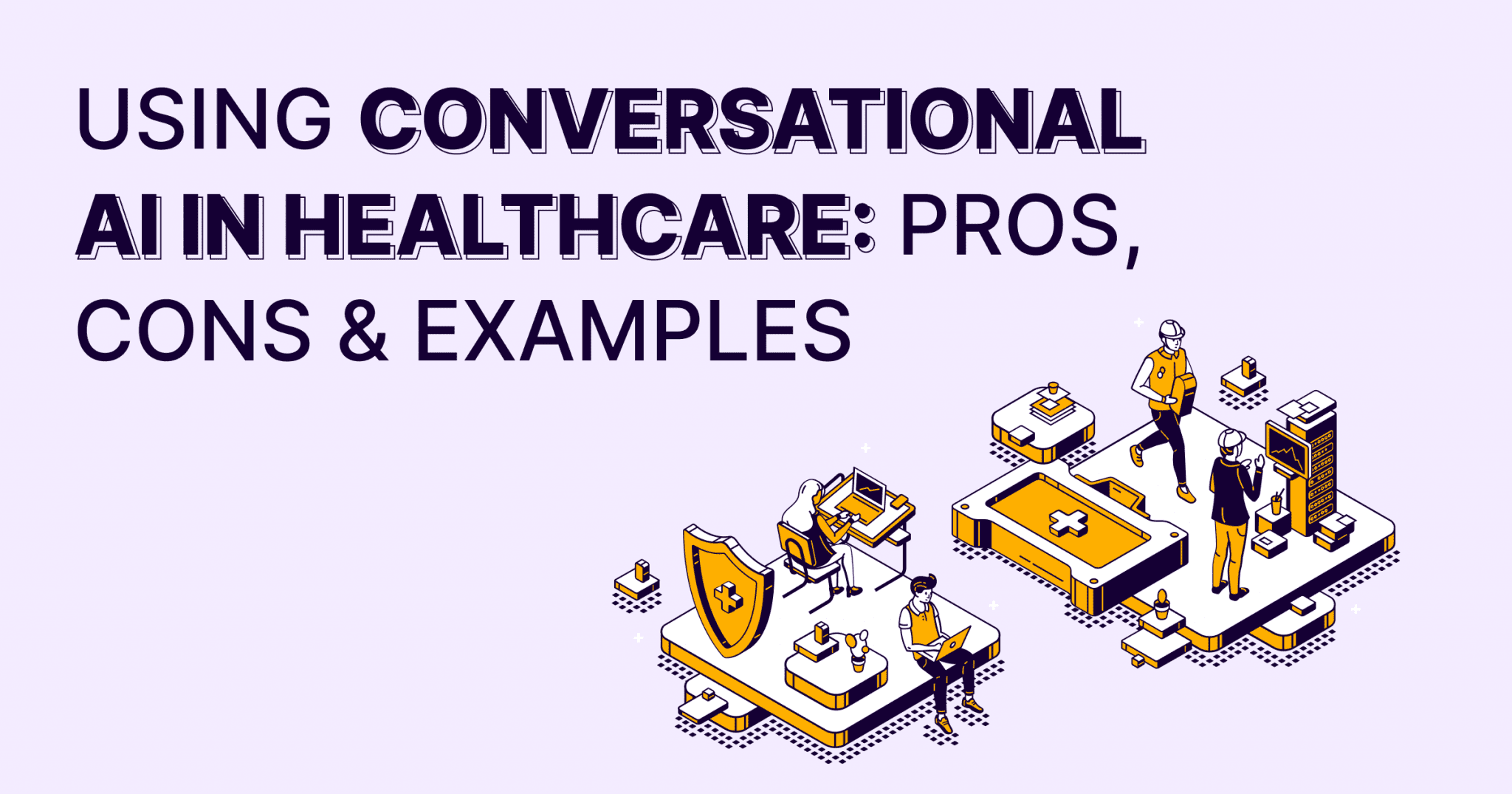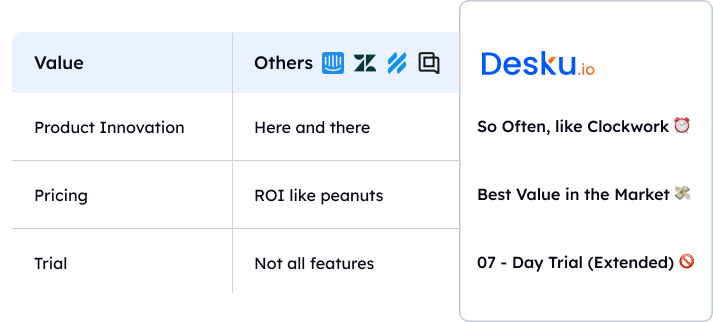Conversational AI in healthcare is like having a smart, understanding friend in the world of computers who can talk to you just like a human does. Imagine you’re speaking to someone who not only understands every word you say but also knows exactly how to help you with your health-related questions or tasks.
This isn’t your regular chatbot that can only repeat pre-written answers. Instead, this is a highly intelligent system that learns from conversations to get better over time. This smart buddy uses some of the most advanced technology out there, such as artificial intelligence (AI), machine learning, and natural language processing. This means it can understand the way people naturally speak or type messages.
It’s like having a conversation with a person who can keep up with the topic, ask you questions to make sure they understand everything correctly, and handle complicated topics easily. For healthcare, this is a big deal. It means that hospitals, clinics, and other healthcare providers can use this technology to make things more efficient and improve how they interact with patients.
This could be anything from scheduling appointments to answering health questions, all without a human needing to step in for the routine stuff. This frees up the healthcare professionals to focus on more critical tasks that require a human touch.
Uses of Conversational AI in Healthcare for Healthcare Providers
Automating High-Volume Administrative Tasks:
Conversational AI significantly lightens the workload for healthcare staff by handling repetitive administrative tasks such as scheduling appointments, processing paperwork, and managing patient records. This automation allows healthcare professionals to dedicate more time to patient care and other critical duties, enhancing the overall efficiency and quality of healthcare services.
Centralizing Access to Knowledge:
This technology integrates seamlessly into daily workflows, providing immediate access to a centralized knowledge base. Healthcare professionals can quickly obtain information without the need to switch between different systems. This efficiency reduces time wastage and boosts productivity, enabling staff to focus more on patient care.
Facilitating the Dissemination of New Protocols:
Conversational AI serves as an effective tool for rapidly spreading important updates about care guidelines, new protocols, and organizational announcements. Ensuring that all staff members are on the same page and up-to-date with the latest information improves care coordination and compliance with healthcare standards.
Proactively Addressing IT Issues:
By handling common IT inquiries and issues through conversational AI, healthcare organizations can preemptively solve problems before they escalate. This capability reduces the workload on IT help desks and maintains smooth operation of technological systems, crucial for the day-to-day running of healthcare facilities.
Monitoring Utilization Trends:
Conversational AI can analyze and monitor operational data, including utilization trends, to help healthcare providers optimize resources and support staff more effectively. By understanding these patterns, organizations can make informed decisions to improve service delivery and operational efficiency.
Streamlining Workflows:
By integrating conversational AI into healthcare systems, providers can streamline various processes, from patient intake to discharge. This seamless operation reduces bottlenecks, minimizes errors, and enhances the patient experience, leading to better healthcare outcomes.
Enabling 24/7 Self-Service for Common Staff Queries:
Conversational AI provides round-the-clock assistance for staff seeking information on HR policies, benefits, schedules, and more. This constant availability improves staff satisfaction by giving them immediate access to the information they need, whenever they need it, thereby reducing administrative delays and enhancing work-life balance.
Uses of Conversational AI in Healthcare for Patients
Automated Appointment Reminders and Scheduling:
Conversational AI sends timely reminders and facilitates hassle-free appointment scheduling. This reduces missed appointments and helps patients manage their healthcare effectively, ensuring they receive timely medical attention.
Answering Common Patient Questions:
By providing instant responses to queries about symptoms, treatments, and medications, conversational AI enhances patient knowledge and eases anxieties. This immediate access to information empowers patients to make informed health decisions.
Gathering Patient Health History and Insurance Information:
Conversational AI streamlines the collection of vital health and insurance data from patients. This simplification leads to more efficient healthcare delivery, with less time spent on paperwork and more time available for care.
Simplifying Prescription Refill Requests:
Patients can easily request medication refills through conversational AI interfaces, improving adherence to treatment plans and eliminating the need for cumbersome processes or phone calls.
Guiding Patients Through Triage Questions:
Conversational AI assesses the urgency of a patient’s condition by asking structured triage questions. This helps in prioritizing care and directing patients to the appropriate level of healthcare services when needed.
Delivering After-Care Instructions and Follow-ups Post-Discharge:
By providing personalized after-care instructions and timely follow-up reminders, conversational AI ensures patients adhere to recovery plans and helps reduce readmission rates.
Offering Health Coaching and Chronic Disease Management:
Conversational AI can deliver continuous health coaching, support chronic disease management, and encourage lifestyle changes. This ongoing support helps patients manage their conditions more effectively and fosters better health outcomes.
Enabling Voice-Based Interactions for Telehealth Visits:
Voice interactions through conversational AI make telehealth services more accessible, especially for those who are technologically challenged or have disabilities, ensuring all patients can benefit from remote healthcare.
Analyzing Usage Patterns to Provide Personalized Recommendations:
By understanding patient interactions and behaviors, conversational AI can offer tailored health recommendations, enhancing the personalization and effectiveness of healthcare advice.
Sending Preventative Care Reminders to Patients:
Conversational AI helps in preventive healthcare by sending reminders for vaccinations, screenings, and check-ups, encouraging patients to take proactive steps towards maintaining their health.
Integrating with Remote Monitoring Devices to Track Health Data:
When combined with remote monitoring devices, conversational AI can track health metrics in real-time, alerting patients and doctors to potential health issues before they become serious.
Empowering Patients to Easily Access Medical Records and Test Results:
Conversational AI platforms enable patients to quickly access their medical history, records, and test results, making healthcare more transparent and empowering patients to take an active role in their health management.
Types of Conversational AI in Healthcare
Conversational AI in healthcare, where technology is tailored to become your personal digital sidekick. These innovative interfaces offer seamless, continuous engagement with users, streamlining customer interactions and revolutionizing business processes with automation.
- Chatbots: Chatbots simulate human-like conversations through text, assisting users by quickly responding to inquiries and providing support, enhancing customer service efficiency.
- Virtual Assistants: Voice-activated and capable of performing tasks from human commands, virtual assistants like Siri and Alexa streamline interactions and tasks on devices and smart speakers.
- Text-to-Speech Software: This technology converts written text into spoken voice output, widely used for creating audiobooks, accessible content for visually impaired users, and providing audible instructions.There are both paid and free text to speech software available for users to try.
How Does Conversational AI Work in Healthcare
Conversational AI in healthcare operates through a blend of sophisticated technologies, fundamentally rooted in Natural Language Processing (NLP). This system acts as the central nervous system for AI, enabling it to understand and engage in human-like dialogue during healthcare interactions. Here’s a brief overview of its core components:
Natural Language Processing (NLP): The Core of Conversational AI
Conversational AI in healthcare is fundamentally driven by Natural Language Processing (NLP), akin to the human central nervous system for AI, enabling it to comprehend and articulate human language in healthcare conversations.
Decoding Human Dialogue
NLP acts as a sophisticated translator, analyzing our words to grasp meanings and intents. This ensures AI can craft responses that are coherent and contextually relevant, making interactions effective and meaningful.
Interpreting Emotions and Terminology
NLP’s ability to sense the emotional tone and recognize medical terminologies ensures conversations are not only accurate but also empathetic. This feature is vital in healthcare, where understanding and relevance are key.
Human-like Conversations
Leveraging NLP, Conversational AI offers interactions that mimic human conversations, enhancing user engagement and support quality in healthcare settings. This bridges the clinical need for accuracy with the warmth of personal interaction, providing a seamless and intuitive experience for users.
Machine Learning: The Brain Behind Conversational AI
Machine learning acts as the ever-evolving brain of conversational AI, especially in the healthcare domain. This technology allows AI systems to learn from a vast expanse of data, fine-tuning their responses and capabilities over time. Here’s a closer look:
Evolving Intelligence
Think of machine learning as the process that enables AI to go from novice to expert. By analyzing patterns in data, whether it’s patient inquiries or customer feedback, machine learning algorithms allow conversational AI to improve with every interaction. This isn’t just about understanding words; it’s about grasping context, nuances, and even the subtleties of human emotion.
Adaptive Learning
Machine learning encompasses both supervised learning, where the AI is trained on labeled data, and unsupervised learning, which discovers patterns and relationships in data on its own. There’s also reinforcement learning, where AI learns through trial and error, constantly adjusting its approach based on the outcome of previous interactions. This adaptability is key to providing personalized and accurate healthcare advice or responses.
Refining Conversations
The result is a conversational AI that not only communicates more effectively but also becomes more proficient at addressing a wide range of healthcare-related queries. Machine learning ensures that AI systems are not static; they’re dynamic entities that grow more knowledgeable and useful over time.
Intent: The Driving Force of Conversational AI
Intent is the compass that guides conversational AI through the vast sea of human language and interaction in healthcare. Understanding intent is about more than just parsing words; it’s about comprehending the purpose behind them. Here’s how it works:
Deciphering Human Intent
At its heart, intent recognition involves analyzing the user’s input to determine what they’re really asking for or needing. Whether a patient is inquiring about symptoms, booking appointments, or seeking medical advice, conversational AI uses intent recognition to understand the goal behind each interaction.
Tailored Responses
Once the AI understands the user’s intent, it crafts responses that are not just relevant but also personalized. This could mean providing specific health information, connecting patients with the right healthcare services, or offering timely medical advice. The AI’s ability to interpret intent accurately ensures interactions are meaningful and helpful.
Learning and Evolving
With every conversation, the AI system fine-tunes its ability to recognize intent, enhancing its responses for future interactions. This learning process is continuous, enabling conversational AI to become an increasingly effective support tool in healthcare. It ensures that conversational AI can keep pace with the diverse and evolving needs of patients and healthcare providers.
Entities: The Specifics in Conversational AI
Entities in conversational AI act like the detailed brushstrokes in a painting, adding depth and precision to the broader strokes laid down by natural language processing and intent recognition. In the healthcare context, entities are crucial for understanding the specifics of each user interaction. Here’s a deeper dive into how entities function and their significance:
Pinpointing the Details
Entities refer to the specific pieces of information that conversational AI identifies and extracts from user input. These can be symptoms, medication names, appointment types, or any other pertinent details relevant to the healthcare domain. By recognizing these entities, AI systems can grasp the fine details of what a user is communicating.
Enhancing Understanding and Responses
The identification of entities allows conversational AI to tailor its responses with a high degree of accuracy. For example, if a patient mentions “headache” and “two days” in a conversation, the AI recognizes “headache” as a symptom entity and “two days” as a time entity. This level of detail enables the AI to provide more specific advice, ask relevant follow-up questions, or direct the user to appropriate medical help.
Contextual Relevance
Entities bring context to the conversation, making interactions with AI more meaningful and efficient. They help the AI to filter and prioritize information, ensuring that the guidance or responses offered are closely aligned with the user’s needs. This is particularly valuable in healthcare, where understanding the context can significantly impact the quality of care and advice provided.
Continuous Learning and Refinement
As conversational AI systems encounter a wide variety of entities over numerous interactions, they learn to recognize and understand these details more effectively. This continuous learning process enriches the AI’s knowledge base, enabling it to handle increasingly complex healthcare inquiries with greater precision.
Pros of Conversational AI in Healthcare
- Enhanced Accessibility: Conversational AI provides patients with 24/7 access to healthcare information and services, significantly improving accessibility, especially for routine inquiries or non-emergency medical advice.
- Improved Efficiency: By automating administrative tasks such as appointment scheduling, patient intake, and answering frequently asked questions, conversational AI frees up healthcare professionals to focus on more critical tasks, thereby improving overall efficiency.
- Personalized Patient Experience: Through machine learning and data analysis, conversational AI can offer personalized advice and support to patients, tailored to their specific health conditions and history, enhancing the quality of care.
- Scalability: Conversational AI can handle a large volume of interactions simultaneously, making it easier for healthcare providers to scale their services to meet patient demand without a corresponding increase in administrative staff.
- Cost Reduction: By automating routine tasks and improving operational efficiencies, conversational AI can help reduce healthcare costs associated with staffing and administrative overhead.
- Data Collection and Analysis: Conversational AI systems can collect and analyze patient data, providing healthcare providers with insights into patient health trends, satisfaction levels, and potential areas for service improvement.
Cons of Conversational AI in Healthcare
- Privacy and Security Concerns: The handling of sensitive health information by AI systems raises concerns about data privacy and security. Ensuring compliance with healthcare regulations like HIPAA is crucial.
- Lack of Human Touch: While conversational AI can mimic human interactions, it may lack the empathy and understanding that come from dealing with human healthcare professionals, which can be critical in sensitive situations.
- Misinterpretation Risks: AI systems may sometimes misunderstand complex or nuanced patient queries, leading to incorrect advice or responses, which could potentially affect patient care.
- Dependence on Technology: Over Reliance on conversational AI could lead to technology dependency, where both patients and healthcare providers might become overly dependent on these systems for healthcare delivery.
- Integration Challenges: Integrating conversational AI into existing healthcare systems and workflows can be challenging, requiring significant time, effort, and resources.
- Bias and Equity Issues: If not carefully designed and trained, conversational AI systems may exhibit biases based on the data they are trained on, potentially leading to unequal care quality across different patient demographics.
Conclusion
The integration of conversational AI in healthcare offers a nuanced balance of opportunities and challenges. The advantages, such as enhanced patient engagement, streamlined administrative processes, and accessible health information, pave the way for a more efficient and patient-centered healthcare system.
However, concerns around data privacy, the need for personal touch in care, and AI’s comprehension limitations highlight the importance of thoughtful implementation.
Through real-world examples, we’ve seen conversational AI’s potential to revolutionize patient care and operational efficiency. As the technology advances, navigating its pros and cons with a patient-first approach will be key to unlocking its full potential in transforming healthcare delivery.
FAQs on Conversational AI in Healthcare
Q. What role does conversational AI play in healthcare?
Conversational AI enhances healthcare delivery by automating patient interactions and administrative tasks, making services more accessible and efficient.
Q. Can you give an example of conversational AI in action?
An example is a chatbot on a hospital website that helps patients schedule appointments or provides health information.
Q. What are the advantages and disadvantages of AI in healthcare?
AI improves healthcare efficiency and patient care but raises concerns about privacy, data security, and the loss of personal interaction.
Q. What are some applications of AI in the healthcare sector?
AI applications include diagnostic imaging analysis, predictive patient care tools, personalized medicine, and robotic surgery assistance.













